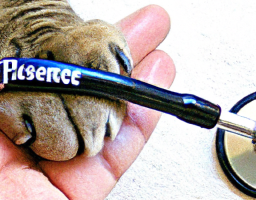Whether you have a mischievous kitten or a loving Labrador, having pet insurance is essential for the well-being of your furry companion. However, with so many options available, it can be overwhelming to choose the right pet insurance policy. That’s where “The Ultimate Guide to Choosing the Right Pet Insurance” comes in. This comprehensive guide will walk you through the key factors to consider, such as coverage, cost, and customer reviews, helping you make an informed decision and ensure your pet receives the best care possible.
Understanding Pet Insurance
What is pet insurance?
Pet insurance is a type of insurance coverage that helps protect you financially in case your pet gets injured or sick. It can help cover the cost of veterinary care, including surgeries, medications, and treatments. Just like human health insurance, pet insurance requires you to pay a monthly premium in exchange for coverage.
Why is pet insurance important?
Pets are an important part of our lives, and just like humans, they can get injured or fall ill. Veterinary care can be expensive, especially in cases of accidents or serious illnesses. Having pet insurance can give you peace of mind knowing that you will be able to provide the best possible care for your furry friend without having to worry about the financial burden.
How does pet insurance work?
Pet insurance works by reimbursing you for a percentage of the eligible veterinary expenses incurred for your pet’s treatment. After paying the veterinarian’s bill, you can submit a claim to your pet insurance provider, and they will evaluate it based on the coverage and policy limits. Once approved, you will receive a reimbursement for the covered amount.
Types of pet insurance
There are different types of pet insurance plans available to cater to various needs and budgets. The most common types include accident-only coverage, accident and illness coverage, wellness coverage, and routine care options. Each type of coverage offers different levels of protection and may have different exclusions and limitations.
Factors to Consider
Coverage
The coverage offered by different pet insurance plans can vary greatly. Before choosing a plan, carefully review what is covered and what is excluded. Some plans may cover only accidents and illnesses, while others may also include routine care, such as vaccinations and dental cleanings. It’s important to find a plan that aligns with the specific healthcare needs of your pet.
Exclusions
Exclusions are specific conditions or treatments that are not covered by the insurance policy. Some common exclusions may include pre-existing conditions, hereditary conditions, elective procedures, and breed-specific conditions. Make sure to thoroughly read the policy documents and understand the exclusions before enrolling in a pet insurance plan.
Deductibles
A deductible is the amount you are responsible for paying out of pocket before the insurance coverage kicks in. Deductibles can vary from plan to plan, and they may be per-incident or annual. Consider your budget and evaluate what deductible amount you are comfortable with when choosing a pet insurance plan.
Reimbursement rates
Pet insurance plans typically offer reimbursement rates ranging from 70% to 100%. This means that after you pay the veterinary bill, the insurance provider will reimburse you for the percentage specified in your policy. Higher reimbursement rates may come with higher premiums, so consider the balance between coverage and cost that works best for you.
Waiting periods
Waiting periods are the time you need to wait after enrolling in a pet insurance plan before coverage becomes effective. Waiting periods can vary depending on the insurance provider and the type of coverage. Some plans may have separate waiting periods for accidents and illnesses. Be aware of the waiting periods and plan accordingly to ensure your pet is covered when needed.
Premiums
Premiums are the monthly or annual payments you make to maintain your pet insurance coverage. The cost of premiums can vary based on factors such as the age of your pet, their breed, location, coverage options, and the insurance provider. Consider your budget and the value you place on the coverage when evaluating different premium options.
Claims process
Understanding the claims process is crucial when choosing a pet insurance plan. Research how claims are submitted, what documentation is required, and how long it takes for claims to be processed and reimbursed. A smooth and efficient claims process can make a significant difference in your overall experience with pet insurance.
Customer reviews
Reading customer reviews can provide valuable insights into the experiences of other pet owners with a particular insurance provider. Look for reviews that discuss the ease of filing claims, reimbursement speed, customer service, and overall satisfaction with the coverage. It’s a good idea to consider a pet insurance provider that has positive reviews from customers.
Financial stability
Ensure that the pet insurance provider you choose has a strong financial standing. A financially stable company is more likely to be able to meet its obligations and provide reliable coverage in the long term. Look for providers that are rated highly by independent rating agencies to ensure the financial stability of the insurance company.
Additional benefits and services
Some pet insurance plans may offer additional benefits and services, such as coverage for alternative therapies, behavioral therapy, prescription medications, or even boarding fees in case you are hospitalized. Consider these additional benefits and services when comparing different pet insurance plans to find the one that best meets your pet’s needs.
Types of Pets Covered
Dogs
Most pet insurance plans cover dogs, regardless of their breed or size. It’s important to note that certain breeds may be subject to breed-specific considerations or exclusions, which we will discuss in more detail later.
Cats
Cats are also commonly covered by pet insurance plans. From accidents to illnesses, pet insurance can help cat owners provide the best possible care for their feline friends.
Birds
While less common than dog or cat insurance, some pet insurance providers offer coverage for birds. Bird owners can benefit from having protection in case of accidents or medical issues.
Small mammals (e.g., rabbits, guinea pigs)
Small mammals like rabbits and guinea pigs can also be covered by pet insurance. As with other types of pets, it’s important to carefully review the coverage and exclusions specific to these animals.
Reptiles
Reptiles, such as turtles or snakes, may also be eligible for pet insurance coverage. Some insurance providers offer specialized plans for exotic pets, which we will discuss in more detail later.
Exotic pets
Exotic pets, including small monkeys, hedgehogs, and lizards, may have unique insurance needs. It’s important to research pet insurance providers that specifically cater to exotic pets and understand their coverage options and limitations.
Breed-Specific Considerations
Genetic health conditions
Certain dog breeds may be prone to genetic health conditions. When considering pet insurance, it’s important to be aware of any breed-specific genetic conditions that may be excluded or have limited coverage. By understanding the potential health risks associated with certain breeds, you can make a more informed decision.
Breed-specific exclusions
Some pet insurance plans may have specific exclusions or limitations based on your pet’s breed. This can be due to the higher risk of certain health conditions or the higher costs associated with specific breeds. Make sure to thoroughly read the policy documents and understand any breed-specific exclusions before enrolling in a plan.
Specialized coverage options
In some cases, certain dog breeds may require specialized coverage options. This can include coverage for breed-specific conditions or additional coverage for specific health concerns. If you have a breed that is prone to certain health issues, consider looking for pet insurance plans that offer tailored coverage options for your breed.
Age Restrictions and Pre-Existing Conditions
Coverage limitations for older pets
Pet insurance plans may have age restrictions and coverage limitations for older pets. As pets age, they may be more prone to health issues and may require more frequent veterinary care. Some insurance providers may have upper age limits or increased premiums for older pets. Consider the age of your pet and the coverage options available before choosing a plan.
Pre-existing condition exclusions
Pre-existing conditions are health conditions that your pet may have before enrolling in a pet insurance plan. Most pet insurance providers have exclusions for pre-existing conditions, meaning they will not cover any treatment related to a condition that your pet had before enrollment. It’s important to be aware of these exclusions when choosing a pet insurance plan.
Waiting periods
Waiting periods are common in pet insurance plans and refer to the period of time you need to wait after enrolling before coverage becomes effective. Waiting periods may vary for accidents and illnesses. During this waiting period, any conditions that arise or symptoms related to pre-existing conditions may not be covered. Understanding waiting periods is essential to ensure your pet is properly protected when needed.
Choosing the Right Coverage
Accident-only coverage
Accident-only coverage is the most basic type of pet insurance coverage. It provides protection for accidents, such as injuries from car accidents or broken bones. This type of coverage does not typically cover illnesses or pre-existing conditions. Accident-only coverage can be a more affordable option but may not provide comprehensive protection.
Accident and illness coverage
Accident and illness coverage is a more comprehensive option that includes coverage for both accidents and illnesses. This type of coverage can help cover veterinary expenses related to a wide range of conditions, such as infections, allergies, or even cancer treatments. Accident and illness coverage provides more extensive protection for your pet’s healthcare needs.
Wellness coverage
Wellness coverage, also known as preventive care coverage, covers routine veterinary care, such as vaccines, dental cleanings, and regular check-ups. This type of coverage can help pet owners stay proactive in their pet’s healthcare and catch potential issues early on. Wellness coverage is typically an add-on to accident and illness coverage.
Routine care options
Some pet insurance plans may offer routine care options as part of their coverage. These options may cover additional routine procedures, such as spaying or neutering, microchipping, or training costs. If you are looking for comprehensive coverage that includes routine care, consider plans that offer these additional options.
Comparing Plans and Providers
Researching different pet insurance companies
When choosing pet insurance, it’s important to research different providers to find the best fit for you and your pet. Look for companies with a good reputation, positive customer reviews, and strong financial stability. Consider the coverage options, premiums, and other factors discussed earlier to narrow down your choices.
Obtaining quotes and comparing premiums
Once you have a list of potential pet insurance providers, obtain quotes from each company. Compare the premiums and the coverage offered by each plan. While cost is an important factor, remember to also consider the value of the coverage and the reputation of the provider.
Evaluating coverage details
After getting quotes, carefully evaluate the coverage details provided by each insurance plan. Look for any exclusions or limitations that may impact the coverage for your specific pet. Consider the coverage for accidents, illnesses, and any additional benefits or services that are important to you.
Understanding terms and conditions
Before finalizing your decision, thoroughly read the terms and conditions of the pet insurance plans you are considering. Pay attention to the fine print, including any waiting periods, pre-existing condition exclusions, and termination policies. Understanding all the details will help you make an informed decision and avoid any surprises down the line.
Evaluating Network and Provider Options
In-network providers
Pet insurance plans may have a network of preferred or in-network providers. These are veterinarians or clinics that have agreements with the insurance company and have established a working relationship. Visiting an in-network provider can simplify the claims process and may result in better coverage. When comparing pet insurance plans, consider if the network of providers aligns with your preferred veterinary options.
Out-of-network providers
Out-of-network providers are veterinarians or clinics that do not have a direct agreement with the pet insurance provider. If you choose to visit an out-of-network provider, you may still be eligible for coverage, but the claims process may be more complex, and the coverage may be limited. If you have a preferred veterinarian, make sure they are in-network with the pet insurance plan you choose.
Choosing between an HMO and PPO model
Some pet insurance plans operate on a Health Maintenance Organization (HMO) or Preferred Provider Organization (PPO) model. HMO plans require you to visit specific in-network providers for coverage. PPO plans, on the other hand, allow more flexibility in choosing providers, but visiting out-of-network providers may result in higher out-of-pocket expenses. Consider your preferred level of flexibility when selecting a plan.
The Claims Process
Submitting a claim
When your pet receives veterinary care, you will need to submit a claim to your pet insurance provider. Claims can typically be submitted online or through mail. Follow the instructions provided by the insurance company to ensure your claim is properly processed.
Required documentation
When submitting a claim, you will typically need to provide documentation related to the veterinary treatment received. This can include invoices, medical records, and any other relevant documents. Ensure that you have all the necessary documentation before submitting the claim to avoid delays or issues.
Reimbursement procedures
After your claim is submitted, the insurance provider will review it to verify that the expenses are eligible for reimbursement according to the policy terms. Once approved, you will receive a reimbursement for the covered amount. Each provider may have different reimbursement procedures, so be sure to understand how and when you will receive your reimbursement.
Average claim processing times
Claim processing times can vary depending on the pet insurance provider. Some claims may be processed within a few days, while others may take several weeks. While you can’t control the processing time, it’s important to be aware of the average processing times when comparing different insurance companies.
Conclusion
Choosing the right pet insurance is an important decision to ensure the well-being of your furry or feathered companion. Understanding the different types of coverage, policy details, and considering factors such as breed-specific considerations and age restrictions is crucial. By carefully evaluating the options, comparing plans and providers, and understanding the claims process, you can make an informed decision and find a pet insurance plan that provides the necessary coverage for your pet’s healthcare needs. Remember, with the right pet insurance, you can focus on giving your pet the love and care they deserve, knowing that their health is protected.



